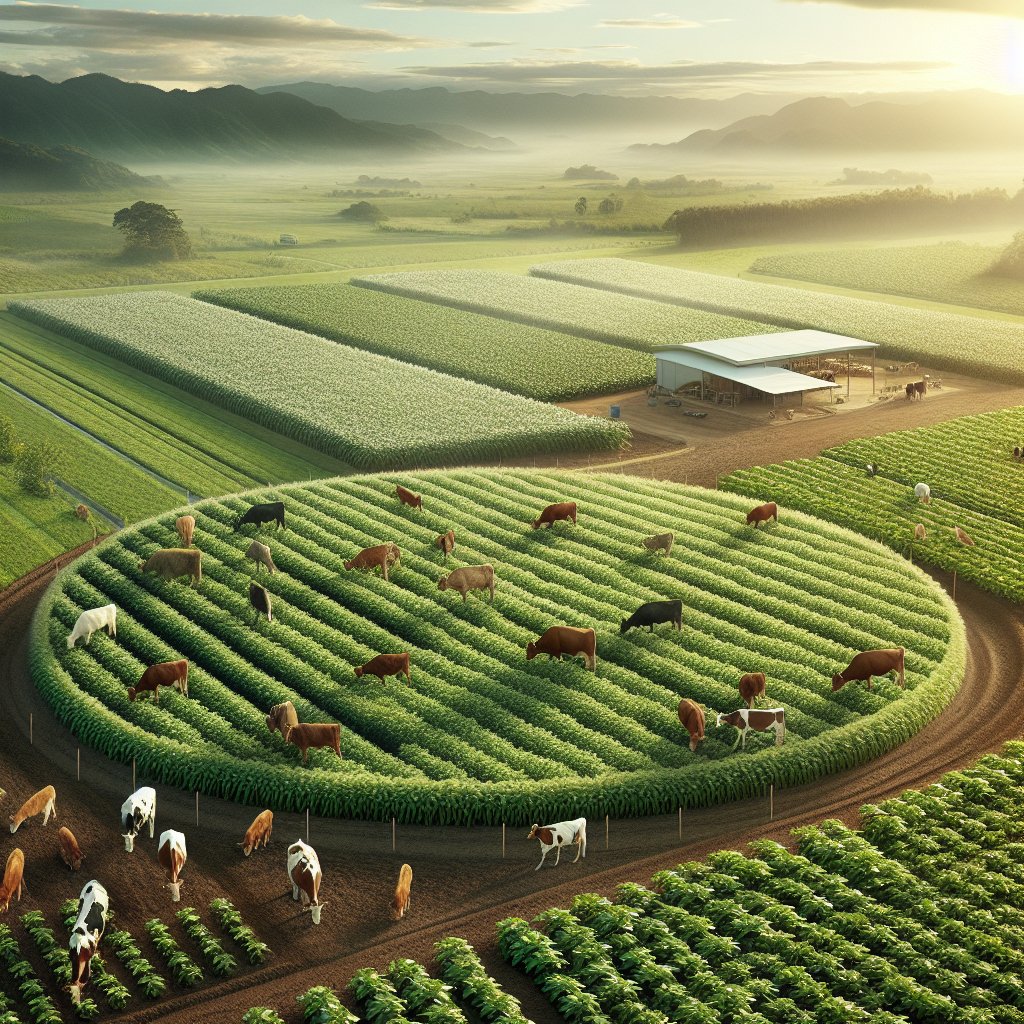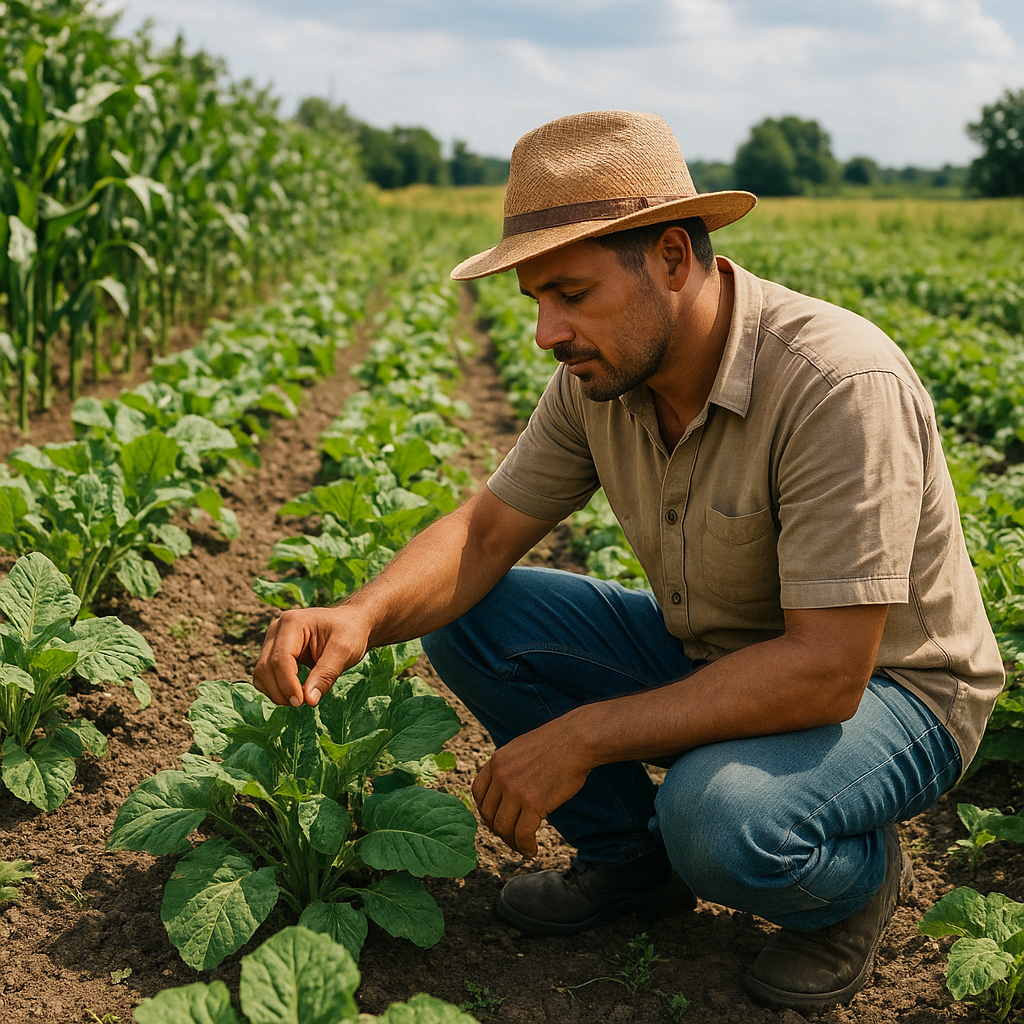
Integrated crop-livestock systems (ICLS) offer a promising approach to improving farm yields by combining the strengths of both crop and livestock production. This method not only enhances productivity but also promotes sustainability and resilience in agricultural practices. By integrating these two components, farmers can optimize resource use, reduce waste, and create a more balanced ecosystem on their farms.
Understanding Integrated Crop-Livestock Systems
Integrated crop-livestock systems are agricultural practices that combine crop production and livestock rearing on the same farm. This integration allows for the efficient use of resources, as the outputs of one system can serve as inputs for the other. For example, crop residues can be used as feed for livestock, while manure from livestock can be used as a natural fertilizer for crops. This symbiotic relationship not only enhances productivity but also reduces the need for external inputs, such as synthetic fertilizers and feed.
One of the key benefits of ICLS is the ability to diversify farm income. By producing both crops and livestock, farmers can reduce their reliance on a single source of income, making their operations more resilient to market fluctuations and environmental challenges. Additionally, integrated systems can improve soil health and fertility, as the continuous cycling of nutrients between crops and livestock helps maintain a balanced ecosystem.
Benefits of Integrated Crop-Livestock Systems
The adoption of integrated crop-livestock systems offers numerous benefits for farmers, the environment, and society as a whole. Some of the most significant advantages include:
- Increased Productivity: By utilizing the synergies between crops and livestock, farmers can achieve higher yields and more efficient resource use. This can lead to increased food production and improved food security.
- Enhanced Soil Health: The integration of livestock into crop systems can improve soil structure and fertility through the addition of organic matter from manure. This can lead to better water retention, reduced erosion, and increased nutrient availability for crops.
- Reduced Environmental Impact: Integrated systems can help reduce the environmental footprint of agriculture by minimizing the need for synthetic inputs and reducing greenhouse gas emissions. The use of manure as a natural fertilizer can decrease the reliance on chemical fertilizers, while the efficient use of crop residues can reduce waste.
- Improved Resilience: By diversifying farm operations, integrated systems can enhance the resilience of farms to external shocks, such as climate change, pests, and market volatility. This can help ensure the long-term sustainability of agricultural practices.
Implementing Integrated Crop-Livestock Systems
Transitioning to an integrated crop-livestock system requires careful planning and management. Farmers must consider factors such as land availability, climate, and market demand when designing their systems. Here are some key steps to successfully implement ICLS:
Assessing Farm Resources
Before implementing an integrated system, farmers should conduct a thorough assessment of their farm resources, including land, water, labor, and capital. This will help determine the most suitable crops and livestock for their specific conditions. Additionally, farmers should evaluate their current production practices and identify areas where integration can improve efficiency and sustainability.
Designing the System
Once the farm resources have been assessed, farmers can begin designing their integrated system. This involves selecting appropriate crop and livestock species, determining the optimal layout for the farm, and establishing management practices that promote synergy between the two components. For example, farmers may choose to rotate crops and livestock on the same land to enhance soil fertility and reduce pest pressure.
Implementing Management Practices
Effective management is crucial for the success of integrated crop-livestock systems. Farmers should implement practices that promote the health and productivity of both crops and livestock, such as proper feeding, watering, and disease control. Additionally, farmers should monitor their systems regularly to identify any issues and make necessary adjustments.
Challenges and Solutions
While integrated crop-livestock systems offer numerous benefits, they also present certain challenges that farmers must address. Some of the most common challenges include:
- Complexity: Managing an integrated system can be more complex than traditional farming methods, as it requires a deep understanding of both crop and livestock production. Farmers may need to invest in additional training and education to successfully implement ICLS.
- Resource Competition: Crops and livestock may compete for limited resources, such as water and nutrients. Farmers must carefully manage these resources to ensure that both components of the system receive adequate support.
- Market Access: Farmers may face challenges in accessing markets for both crops and livestock products. Developing strong market linkages and value chains can help ensure that farmers receive fair prices for their products.
To overcome these challenges, farmers can seek support from agricultural extension services, research institutions, and farmer organizations. These entities can provide valuable resources, such as technical assistance, training, and access to markets, to help farmers successfully implement and manage integrated crop-livestock systems.
Conclusion
Integrated crop-livestock systems offer a promising approach to improving farm yields and promoting sustainable agricultural practices. By combining the strengths of both crop and livestock production, farmers can optimize resource use, enhance soil health, and increase resilience to external shocks. While the transition to ICLS may present certain challenges, the potential benefits make it a worthwhile investment for farmers seeking to improve their productivity and sustainability. With the right support and management practices, integrated systems can play a crucial role in ensuring food security and environmental sustainability for future generations.

